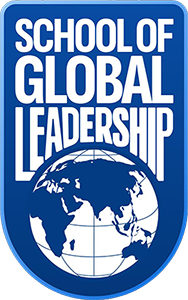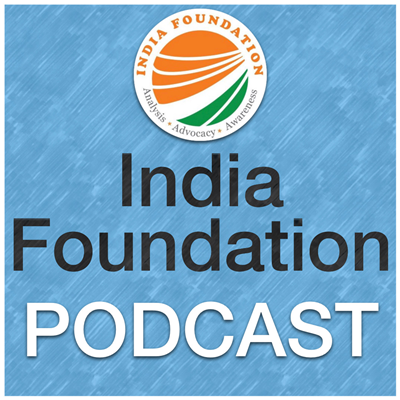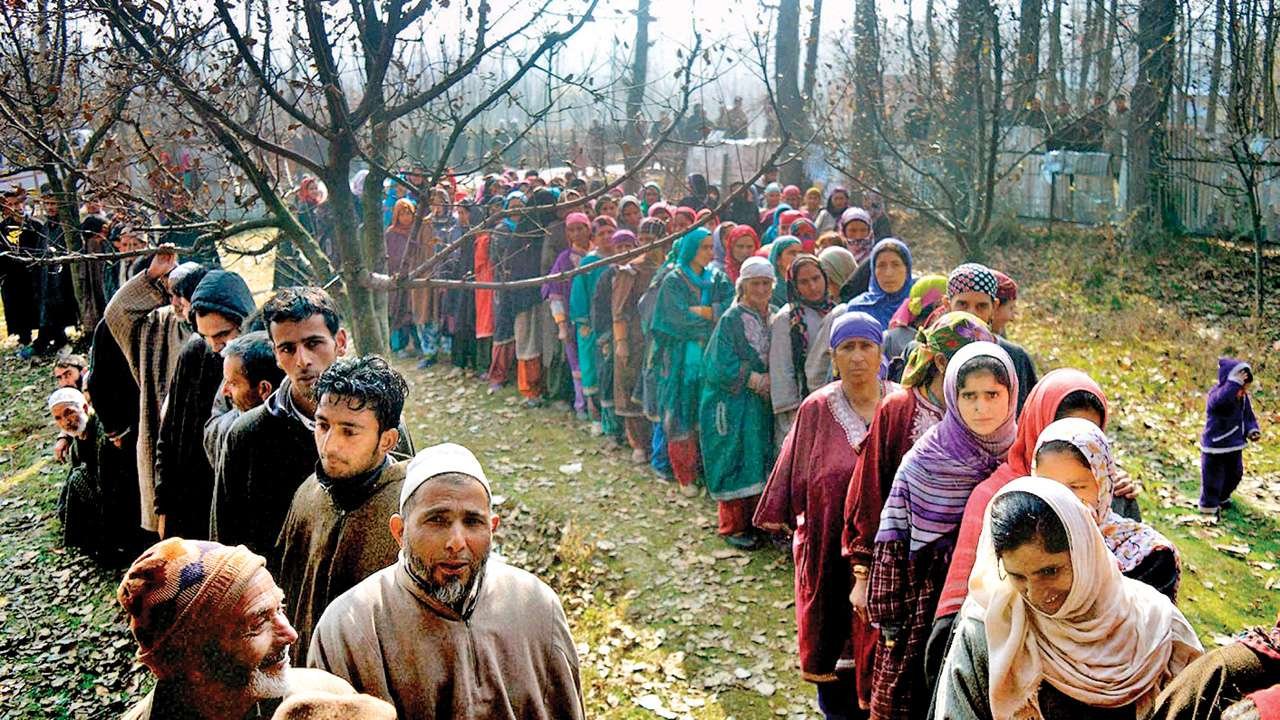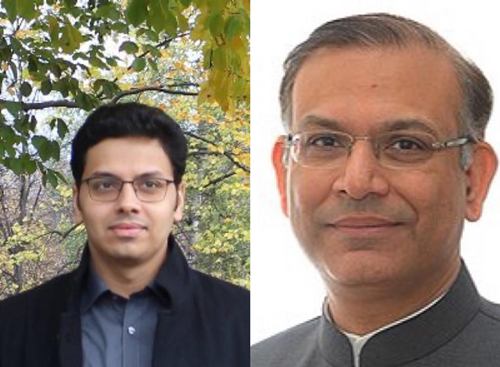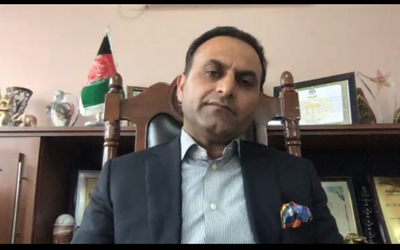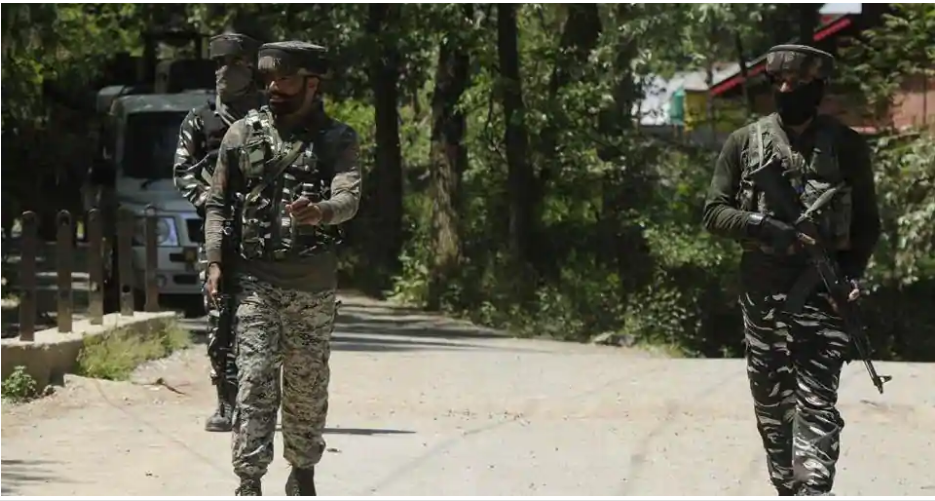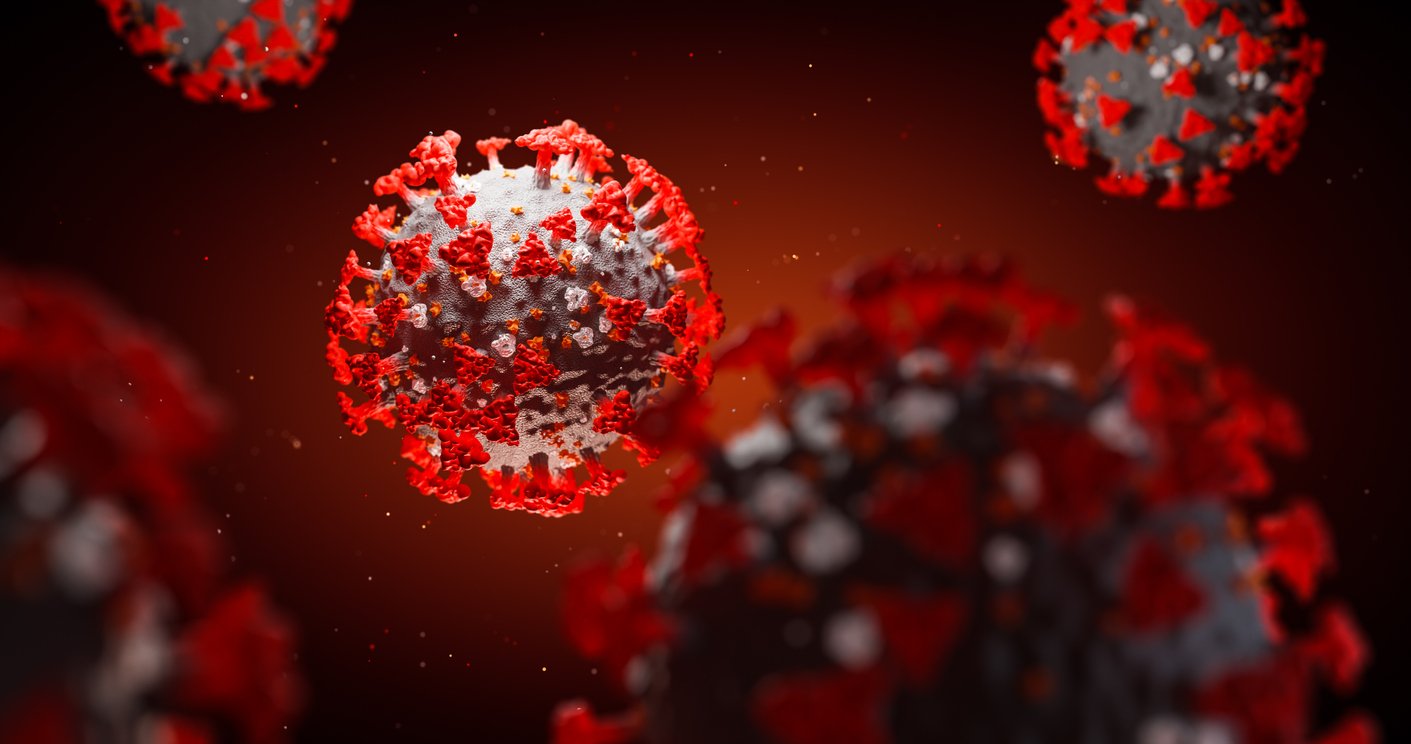In this edition of the India Foundation Podcast, we bring to you a Panel Discussion on “India-China Border Issues”. The panel comprises of Amb Ashok Kantha (Former Indian Ambassador to China; Director, Institute of Chinese Studies), Lt Gen. Devraj Anbu (Former Vice Chief of Army Staff), Amb Gautam Bambawale (Former Indian Ambassador to China & Pakistan) and Amb P Stobdan (Former Indian Ambassador)
Delimitation of Constituencies: A Vital Necessity in J&K
In a formal statement, the party National Conference (NC) rejected the government’s plan of forming an advisory committee to handle the delimitation of assembly constituencies in the J&K Union Territory. NC members nominated on the said committee by the Lok Sabha Speaker have declined to accept the assignment. Other opposition parties in the UT have also rejected the process attributing it to government’s opportunism. The main objection of NC and other dissenting groups in the valley is that there is no elected government or assembly in the State and the Lt. Governor being an agent of the Union government does not have powers to make sensitive constitutional decisions. The real fear of the dissenting groups in the UT of J&K is that the delimitation process will weaken the stranglehold that such groups have on the state’s polity. The Valley-based mainstream leadership is obsessed with the apprehension of BJP making all-out efforts of reversing the complexion of assembly in a way that the Hindus come into prominence in the law-making bodies of the Union Territory.
Generally speaking, the sub-continental Muslim psyche is controlled and guided by some fantasies rooted either in scripture or tradition. For example, it is believed by some that Muslims are born or created only to rule and not remain as subjects and subordinates. This emanates from the concept that “with God’s will the lesser shall prevail”. In this concept remains embedded the urge for jihad, muscle power (terror) and suicide or Shahadat. Destabilising existing order becomes a religious or social duty. Then there is the concept of Islamic Caliphate that proposes to convert the entire human society to the Islamic faith and establish monolithic Islamic Caliphate as the one and only one state on the globe. This has given the Muslims a sense of exclusiveness that makes them oppose anything and everything that comes from sources other than their own. Thus emerges the firm belief that the Quran is a compendium of all the knowledge revealed by the Creator and cannot be contradicted, which also brings it in confrontation with the spectacular power and impact of modern science and technology.
This fossilised thinking is at the root of all the problems the Muslims of Kashmir Valley are beset with. They vociferously support the demand for the promulgation of Islamic sharia and the legal system but they find the idea of Indian democracy galling. Kashmir Valley has 54.9 per cent of the total population of the UT. Jammu region has 42.9 per cent and Ladakh has 2.2 per cent. Erstwhile J&K State had five chief ministers all Muslims and from the valley. Only one chief minister, Azad, was not from the valley. He was however a Muslim from Chenab Valley with a population of about 12 lakh. No non-muslim has ever been a chief minister of the erstwhile state of J&K, and at one time after the death of Sadiq, the name of the senior-most cabinet member GirdharilalDogra was deleted from the panel of prospective incumbents.
The question is that the Sikhs are barely 1.72 per cent of the total Indian population, yet a Sikh Prime Minister ruled the roost for 10 long years. In contrast, the Hindus with 65.23 per cent population in Jammu region alone and about 33 per cent of the total population of erstwhile J&K State, are not acceptable to the valley Muslim leadership to send in a chief minister. This shows how valley Muslims interprets democracy. This is a travesty which is unacceptable in a democracy.
With the Reorganisation Act in place, the situation has drastically changed in Jammu and Kashmir. Article 370 was incorporated in the Indian Constitution in 1949 as a result of a majority vote in the Parliament despite their being many dissenting voices. This was on the principle of the will of the majority. The same principle applies to the scrapping of the Article in 2019, which means that while there will be dissent, the will of the majority must prevail.
Reorganisation Act and domicile laws now entitle hundreds of thousands of hitherto de-enfranchised people to become the citizens of the erstwhile state and enjoy their right to vote. This necessitates creating/reorganising assembly constituencies to accommodate them as legal citizens. It is preposterous to call it gerrymandering. Gerrymandering is what has been done to two constituencies of HabbaKadal and Rainawari, the once Hindu dominated constituencies in Srinagar.
The people have to be empowered constitutionally and administratively. By rejecting the Delimitation Commission, NC and other dissenting groups only prove that denying the citizens rights of the refugees from PoK and West Punjab and ensuring their disempowerment for seven decades has been their steel-framed policy. Such blatant discrimination cannot be upheld either by the Indian Constitution or by international law.
It is wrong to say that scrapping of the special status of the erstwhile State of Jammu and Kashmir was politically motivated and that it was brought about as “Hindutva” programme. People should know that the communal and discriminatory leadership of the valley are squarely responsible for it as it forced the Union government to take a drastic measure to safeguard the territorial integrity and national sovereignty of the country. The solid reasons for the Home Minister to take the drastic and historic decision were:
- By settling nearly 90 thousand Rohingya refugees of Myanmar in Jammu region without the consent of the Assembly and issuing them such certification as confirmed their citizenship of the State, the PDP-led government had not only told a lie to the Assembly but had brazenly infringed the provisions of Article 370.
- By issuing the Gupkar Declaration, the mainstream parties had taken a very dangerous step of calling any attempt of scraping Article 370 as“war against people”.
- Mounting a campaign against the presence of Indian security establishment in the disturbed state where it has become necessary to deter clandestine infiltration from across the border, is tantamount to sedition. No honest government would tolerate an antagonistic attitude like this and the Union government had to take proper action.
The Kashmir Valley leadership needs to understand that no community can stand in isolation or exclusive setting. Thousands of Kashmiri Muslims have purchased immovable properties in almost all big cities of India. In Jammu region, at a time when the Roshni loot was set afoot, the government issued official advertisements saying that only Muslim can apply for allotment of plots in new localities like Bhatinda, By-Pass, Sidhra etc.
All these steps indicated that the valley-based Muslim leadership wanted to change the demographic complexion of Jammu and make deep inroads into the region by slow degrees. What were the purpose behind settling the illegal Rohingya in Jammu and that too along sensitive Samba-Jammu border but not taking them to the Valley where they would have been more comfortable with their co-religionists? The NC-led communal government had no qualms of conscience in passing a law in the Assembly dominated by Valley Muslim MLAs that any Kashmiri girl marrying a man outside the State loses citizenship rights and this law applies to her children also.
Valley leadership has to understand that their resistance and opposition is meaningless. The clock will not move back. Exclusiveness and blue-eyed treatment expectations are redundant. No community in the country can enjoy any special status and those hitherto deprived of their rights will get them come what may. The sooner Kashmir leadership understands the writing on the wall the better for the good of the general public. Once the rail link across the PirPanjal becomes functional, Kashmir’s economy will go through a sea change. Along with this, the massive developmental programme will explode all the myths and misgivings deliberately structured by the ambivalent Kashmir leadership with vested interests.
(Prof. K.N. Pandita is the former Director of the Centre of Central Asian Studies, Kashmir University, Srinagar. Views expressed are personal.)
Podcast 4: Decoding the Economic Stimulus Package with Shri Jayant Sinha
The fourth episode of the India Foundation Podcast is a conversation between Shri Jayant Sinha, Former Union Minister of State and Member of Parliament and Member, Board of Governors, India Foundation with Shri Rajat Sethi, Advisor to the Chief Minister of Manipur.
Podcast 3: US-Taliban Peace Deal: The Road Ahead
In this episode of India Foundation Podcasts, Former Ambassador of Afghanistan to India Mr Shaida Mohammad Abdali elaborates on the US-Taliban peace deal and helps us better understand the situation in Afghanistan post this peace deal and the road ahead, particularly with regards to India
Podcast 2: MEA during COVID-19
In the second episode of IF Podcasts, the Foreign Secretary of India Shri Harsh Vardhan Shringla spells out the efforts being made by the MEA to deal with the global pandemic.
Podcast 1: Gandhi’s Hinduism – The Struggle Against Jinnah’s Islam
This book gives the readers a very unique and intimate glimpse of the Indian political landscape in the lead up to the tumultuous times of 1947, capturing the events and people behind the partition of India, primarily Md Ali Jinnah and Mahatma Gandhi.
Hysteria, Tears and a False Analogy
The eruption of violence in Jammu and Kashmir in the late 1980s was a manifestation of a virulent Islamist ideology, sponsored by an inimical hostile neighbour. The process of radicalisation started in the 1960s but took on increased urgency a decade later, as expounded on by Bashir Assad in his book, ‘The K File’. In the 1980s, a deliberate hate campaign was started against the minority Hindu population in the Kashmir Valley, which forced them to flee their homes in January 1990 after hundreds were murdered and raped. The genocide went largely unreported in the country, still constituting as the biggest blot on the Indian State.
It has been three decades since then, and today, terrorism in the UT of J&K has been defanged to a large degree. The political initiative of doing away with the provisions of Article 370 and 35A, and in splitting the erstwhile state into two union territories appears to be paying off, but it is still a work in progress. Inevitably, in long drawn out conflicts, there will be times when the Armed Forces suffer casualties. When that happens, we must further strengthen our resolve. Introspection must take place periodically, but the need is to look at the larger picture, rather than focus on individual instances. This goes for terrorist elimination too. The number of terrorists killed is not a pointer to the success or otherwise of the military’s Counter-Insurgency and Counter-Terrorism (CICT) operations. That must be viewed in a different prism. And that is why the nature of the conflict must be understood.
In early April, the Army lost five of its brave hearts from the Special Forces when they were on a mission to neutralise some terrorists in snowbound peaks. All the five terrorists who were holed up in that area were eliminated, but the Army’s operational strategy came under question by some armchair critics. Then in early May, the CO of 21 RR, Col Ashutosh Sharma, was Killed In Action (KIA), when he, along with a team of three army personnel and one police sub-inspector went on a hostage rescue mission. While the terrorists were eliminated, once again voices rose in criticism of the need and necessity of a senior officer to personally lead such operations. Some veterans who should have known better even started questioning the Indian Army’s operating procedures and their training standards.
At times it is easy to forget that the Indian Army is great, precisely because of its frontline leadership. That does not, of course, mean that officers rush in blindly into combat missions; it simply means that they take measured risks, and when they do so, they place their lives on line, as an example to the men they have the honour to lead and to command. This explains the outstanding performance of the Armed Forces in the four wars fought against Pakistan and in the numerous CICT operations which the Army continues to be engaged in. Kargil highlighted what frontline leadership could achieve. Against impossible odds, peak after peak was captured, a feat perhaps no other army in the world could have achieved. This is a great tradition of the Army, which has been nurtured over the years and which has made the Indian Army what it is today.
Some journalists went totally off tangent when they wrote that the death of our soldiers in battle should never be glorified. These worthies used wrong terminologies. The country does not glorify the death of its soldiers Killed in Action (KIA). It honours their memory—and there is a huge difference between the two. If a nation cannot honour its heroes, then truly, that nation is doomed. It is hoped that Indian scribes would understand the difference and not seek to inject an element of venality into the supreme sacrifices made by our brave hearts.
A few days after the 21 RR team of five led by their CO were KIA, the Indian Army, in a brilliant operation, eliminated the local head of the Hizbul Mujahideen. Some people now went on a different tangent and claimed that the Army had avenged the loss of its soldiers. While the killing of the head of a rabid terrorist organisation is indeed a positive marker, it must never be equated with having avenged our brave hearts. That is putting the bar at the lowest possible level. Taking the analogy of a game of chess, the person eliminated was but a mere pawn. His handlers based in Pakistan are the major pieces and the King is the Pakistani State. Our soldiers KIA can only be avenged when the source of terrorism is struck and fear is put into the hearts of such perpetrators.
Let us not look at conflict based on small scale actions which take place frequently in our attempt to bring peace to the UT of J&K. There is a need to look at the larger canvas. And here, some of our veterans, who have occupied key positions during their time in uniform need to exercise restraint in their comments. A former Army Commander of the Northern Command, while writing in The Print, wrote:
But what is more important is for the government and the Army to review the political and military strategy to deal with the situation in J&K. This encounter and the killingof three CRPF personnel that followed on 4 May, is part of a disturbing trend that has been noticeable for the last few months… India’s strategic response to Pakistan’s proxy war is high on rhetoric and low in substance…It would be prudent for the government to shed the ideological fantasies and face the strategic reality. It must put the ‘hard’ strategy on the back burner until we have created overwhelming technological military superiority…Prime Minister NarendraModi must use his political acumen to reach out to the alienated people of Kashmir to win their hearts and minds…[i]
An assessment based on a couple of incidents makes for poor analysis. For the first time, Pakistan is on the back foot, having to face the brunt of adverse world opinion for its sponsorship of terror. Pakistan has been placed on the grey list of the FATF and its leadership, both political and military has not been able to get out of the impasse it finds itself post the political initiatives taken in August 2019, which have completely changed the narrative in the UT of J&K. The ground situation in the Valley has improved considerably, a result of the political, diplomatic, economic and military initiatives taken by India. Do not let our veterans become apologists for the enemy and for the inimical forces within the country. The country and the military deserve better.
*Maj Gen Dhruv C Katoch is Director, India Foundation and Editor, India Foundation Journal.
[i]The full article is available at https://theprint.in/opinion/instead-of-organising-spectacles-military-must-focus-on-faultlines-in-kashmir-now/415818/
Impact of Novel Coronavirus in India and the Way Forward
Severe Acute Respiratory Syndrome Coronavirus 2 (SARS-CoV-2), the cause of coronavirus disease (COVID-19), has precipitated a global health crisis and this pandemic has impacted India significantly with over 40,000 cases, more than 10,000 recoveries and 1300 deaths (3.2%) as on 4 May, 2020.[i] With a surface area one-third of the USA and four times the population, we may have been sitting on the top of a potentially active volcano, if it was not for the 21 days lockdown from 25 March, which was later extended to 03 May 2020. In addition to well-publicised measures like regular hand washing and social distancing, the need of the hour is to study the immunological profile of both the individuals who have recovered from the disease and also of asymptomatic carriers to enable therapeutic use. The response of various governments has varied from complete lockdown as in China and India to selective lockdown as in Germany and the USA.
In this regard, one needs to examine the German model where despite very limited lockdown the mortality is 3.5% which is lower than that of other neighbouring EU nations having similar disease load: Italy 13%, UK 13.8%, France 13.9% and Spain 10% have a much higher mortality rate.[ii] Although the death rate in India is around 3%, with one eighth the number of cases as compared to EU nations, the challenge will be to maintain or reduce the death rate one month from now when the number of cases is likely to increase substantially. Germany is combating Covid 19 infection by performing half a million tests per week, identifying those with higher resistance and actively using convalescent plasma (personal communication). Use of convalescent plasma as a trial has yielded positive results in Delhi as per news reports on 24 April. National Institute of Health, USA is using convalescent sera for treatment and clinical trials, testing healthy volunteers for the presence of Covid 19 antibodies, patients who have recovered and are willing to donate plasma, patients and families willing to consider treatment with plasma. Convalescent sera have been used for similar virus respiratory tract infections earlier.[iii]
It is time to commence collection and maintain inventories of convalescent plasma to meet the growing demand for treatment of severe infections. “Convalescent” plasma refers to plasma that is collected from individuals, following resolution of infection and development of antibodies and is likely to result only in short term but immediate immunity as is also done for Class 3 dog bites to prevent rabies. However, this involves rising to the regulatory and logistical challenges spanning drawing up donor eligibility criteria, donor requirement and transfusion itself. This will also involve the inclusion of preferably RNA and at a minimum antibody testing regularly in blood banks as “healthy blood donors” be positive. In the past two decades Blood Banks in India realised that Nucleic acid testing (NAT) of blood donors for HIV, Hepatitis B and Hepatitis C virus is desirable, most blood banks have not been able to switch over. It is time to gradually introduce legislation to make it mandatory for the provision of safe blood and add Covid 19 NAT testing to the menu.[iv]
Although SARS-CoV-2 is novel, partial immunity to is some may be attributed to antibody cross-reactivity and partial immunity from previous infections with the common seasonal coronaviruses (OC43, 229E, NL63, HKU1) that have been circulating in human populations for decades. The case for SARS-CoV-2 can be this as well and might explain why some individuals (perhaps those who have recently recovered from a seasonal coronavirus infection) have milder or asymptomatic infections. Another concept for creating immunity in the population is “Herd Immunity” which occurs when a 60 per cent of the community is deemed immune to a disease (through vaccination and/or prior illness), making the spread of this disease from person to person unlikely. This can happen when many people contract the disease and in time build up an immune response to it (natural immunity). It may also occur when many people are vaccinated against the disease to achieve immunity. Now the strategy to protect residents of Stockholm by inducing herd immunity has got a stamp of approval from the country’s chief epidemiologist Anders Tegnell, who believes that the idea seems to be working and that “herd immunity” could be reached in Stockholm in few weeks. This very strategy did not work for the UK where a lockdown had to be imposed, albeit not complete which permitted 1-2 citizens to go out for exercise maintaining social distance during the process. India has done better as masks are widely available, but are in short supply for the denizens of London for personal use. In India, if we used Herd Immunity for protection the consequences could have been disastrous.
Methods of viral testing include point of care tests (POCT) for antigen and antibody detection and Real-Time Polymerase chain reaction (RT PCR). POCT has a sensitivity of 34 -80% and WHO does not recommend it for clinical decision making. While antigen detecting tests are specific, antibody detection kits are not and other shortcomings include both variability and delay in antibody response following infections. Most studies suggest that antibody response develops only in the second week after infection which implies that a diagnosis of COVID-19 infection based on antibody response will often only be possible in the recovery phase when many of the opportunities for clinical intervention or interruption of disease transmission have already passed. Secondly, antibody detection tests targeting COVID-19 may also cross-react with other pathogens, including other human coronaviruses causing false-positive results. Finally, there is no evidence to show RDTs detecting antibodies could predict whether an individual was immune to reinfection with the COVID-19 virus. WHO does not recommend the use of antibody-detecting rapid diagnostic tests for patient care but encourages the continuation of work to establish their usefulness in disease surveillance and epidemiologic research.[v]
It needs to be emphasised that cellular immunity imparted by lymphocytes, especially T cells and Natural Killer (NK) cells have a greater role in viral infections to which the viral peptides are presented by Human Leukocyte Antigen (HLA) molecules. A vaccine against the virus must be able to augment cellular immunity.
As on date, treatment for Coronavirus is purely supportive and no antivirals are very effective. ICMR advises the use of Hydroxychloroquine for health personnel who are at risk due to professional duties and don’t have any pre-existing heart disease. A recent study has also shown a definite reduction in viral load / its disappearance with the drug.[vi]Remedesivir is another antiviral drug which is being examined for its efficacy against Covid-19.
India needs to adapt to Coronavirus epidemic by augmenting testing facilities, commence nucleic acid testing in the majority of the blood banks to provide safe blood and license the storage as well as the use of convalescent sera. India also needs to do quality research to identify the more immune profile of immunological robust individuals against Covid 19 and fast track research directed towards the development of kits and vaccines against the virus. The usefulness of Hydroxychloroquine in an Indian setting also needs examination and documentation.
Dr (Col) Mahendra Narain Mishra, MD Pathology, European Specialization in Histocompatibility and Immunogenetics (Berlin), is presently Lab Director at Baptist Christian Hospital, Tezpur.
ENDNOTES
[i]https://www.worldmeter.info/coronavirus/ accessed 24 Apr 2020
[ii] Ibid
[iii] Bloch EM et al. Deployment of convalescent plasma for the prevention and treatment of Covid 19. J Clin Invest. 2020. https://doi.org/10.1172/JCI138745
[iv] Chang L, Zhao L, Gong H, Wang Lunan, Wang L. Severe acute respiratory syndrome coronavirus 2 RNA detected in blood donations. Emerg Infect Dis. 2020 Jul [date cited]. https://doi.org/10.3201/eid2607.200839
[v]Advice on the point of care tests for Covid 19 Scientific Brief 08 Apr 2020 www. who. int.
[vi]Gautret P, Lagier JC, Parola P, et al. Hydroxychloroquine and azithromycin as a treatment of COVID-19: results of an open-label non-randomized clinical trial [published online ahead of print, 2020 Mar 20]. Int J Antimicrob Agents. 2020;105949. doi:10.1016/j.ijantimicag. 2020. 105949
Information Warfare and Influence Operations
India Foundation Journal May June 2020
Focus: Geopolitical Challenges in a Post-Covid World

